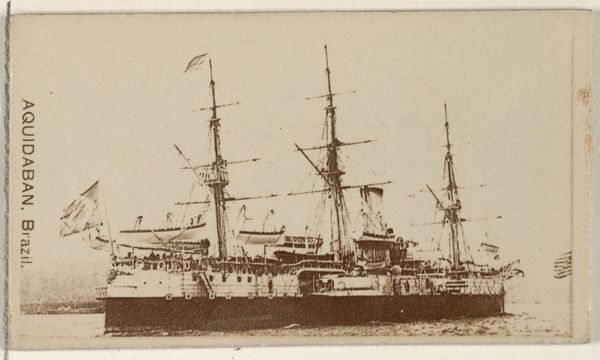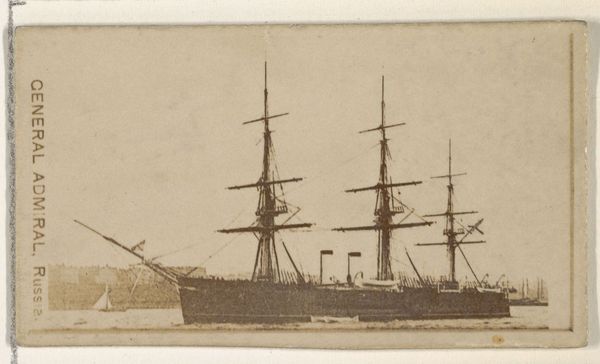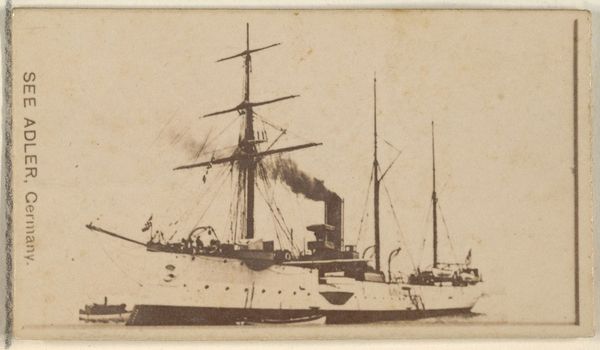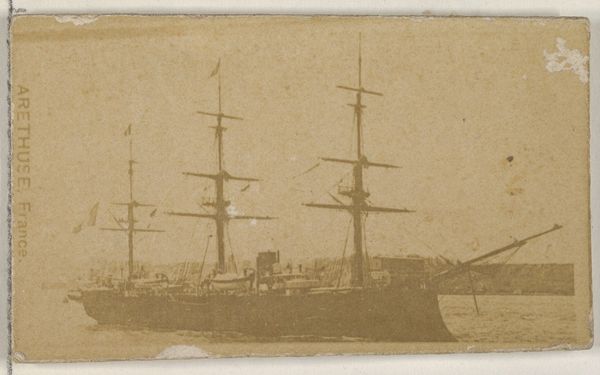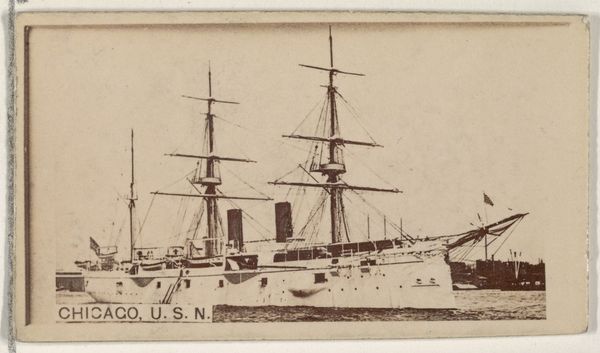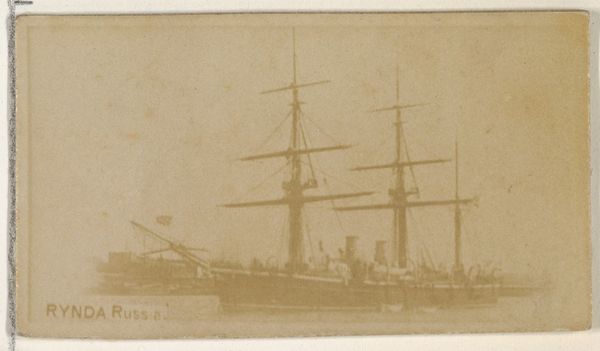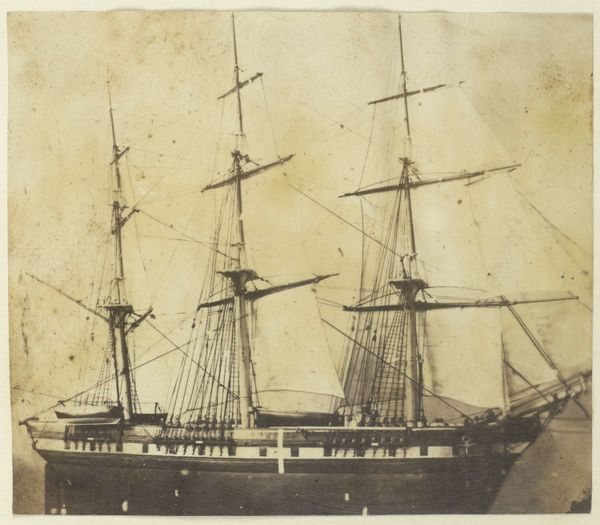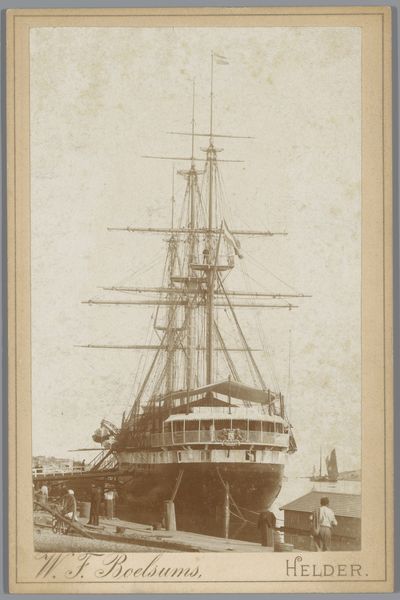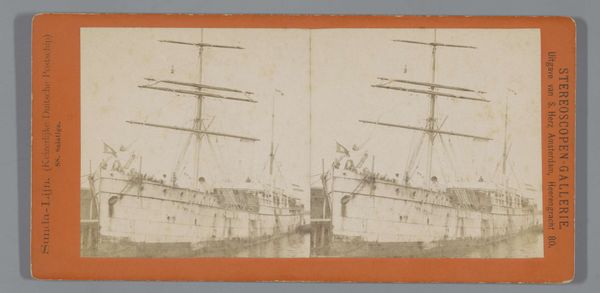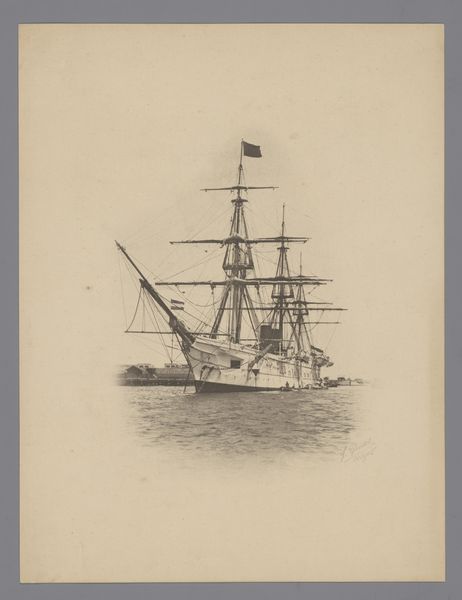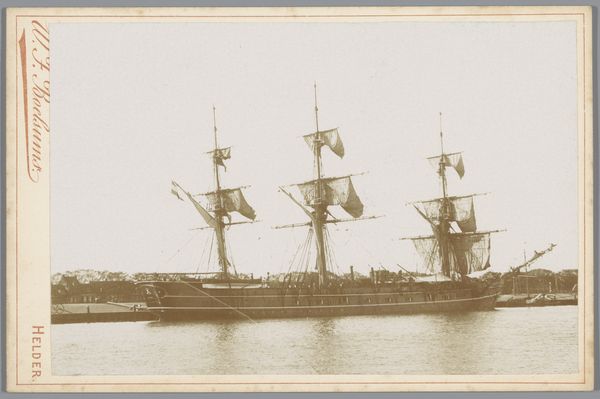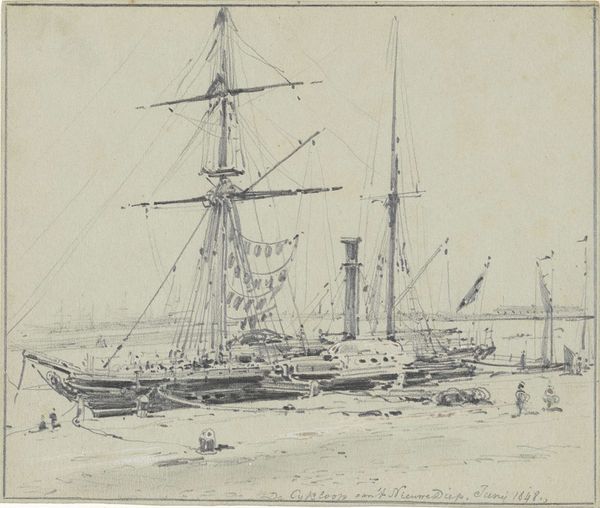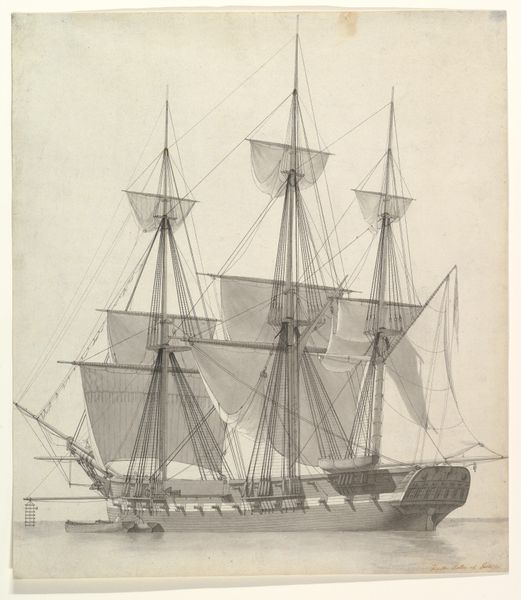
Newark, U.S.N., from the Famous Ships series (N50) for Virginia Brights Cigarettes 1895
0:00
0:00
drawing, print, photography
#
portrait
#
drawing
#
still-life-photography
# print
#
photography
Dimensions: Sheet: 1 1/2 x 2 5/8 in. (3.8 x 6.7 cm)
Copyright: Public Domain
Editor: So, this is "Newark, U.S.N., from the Famous Ships series" by Allen & Ginter, dating back to 1895. It’s a print – originally for Virginia Brights Cigarettes, I think? I’m struck by how detailed it is for something so small, and kind of… official-looking, in a way. What can you tell me about it? Curator: It's fascinating, isn't it? The commissioning of artwork by tobacco companies reveals a significant cultural phenomenon of the late 19th century. This print isn't just a portrait of the ship; it reflects the burgeoning naval power of the United States and the visual strategies employed to project that power onto the public consciousness. How do you think such imagery might have influenced popular opinion at the time? Editor: I suppose it could have built a sense of national pride and strength? It definitely idealizes the ship, presenting it almost like a heroic figure. But cigarettes? That's unexpected. Curator: Exactly. Consider the broader context: the rise of mass media, advertising, and consumer culture. This image served a dual purpose – promoting a product and reinforcing patriotic sentiments. Think about the museums that might collect similar cigarette cards now - what does that say about our current values? Editor: That’s a good point. So, the image moves from something commercial to… historical documentation? The card format feels less formal, but its preservation and collection show its value as more than advertising. I hadn't considered it in such a wider societal way. Curator: Precisely. And its inclusion in museum collections highlights the evolving role of institutions in shaping our understanding of the past and the power of these ephemeral images to carry layers of cultural meaning. We’re not just looking at a ship; we're examining a cultural artifact deeply embedded in social history. Editor: I guess I’ll never look at a cigarette card the same way again. I see it now as more than just an advertisement; it's a reflection of a very specific historical moment and the way power was being visually constructed and circulated. Thanks!
Comments
No comments
Be the first to comment and join the conversation on the ultimate creative platform.
